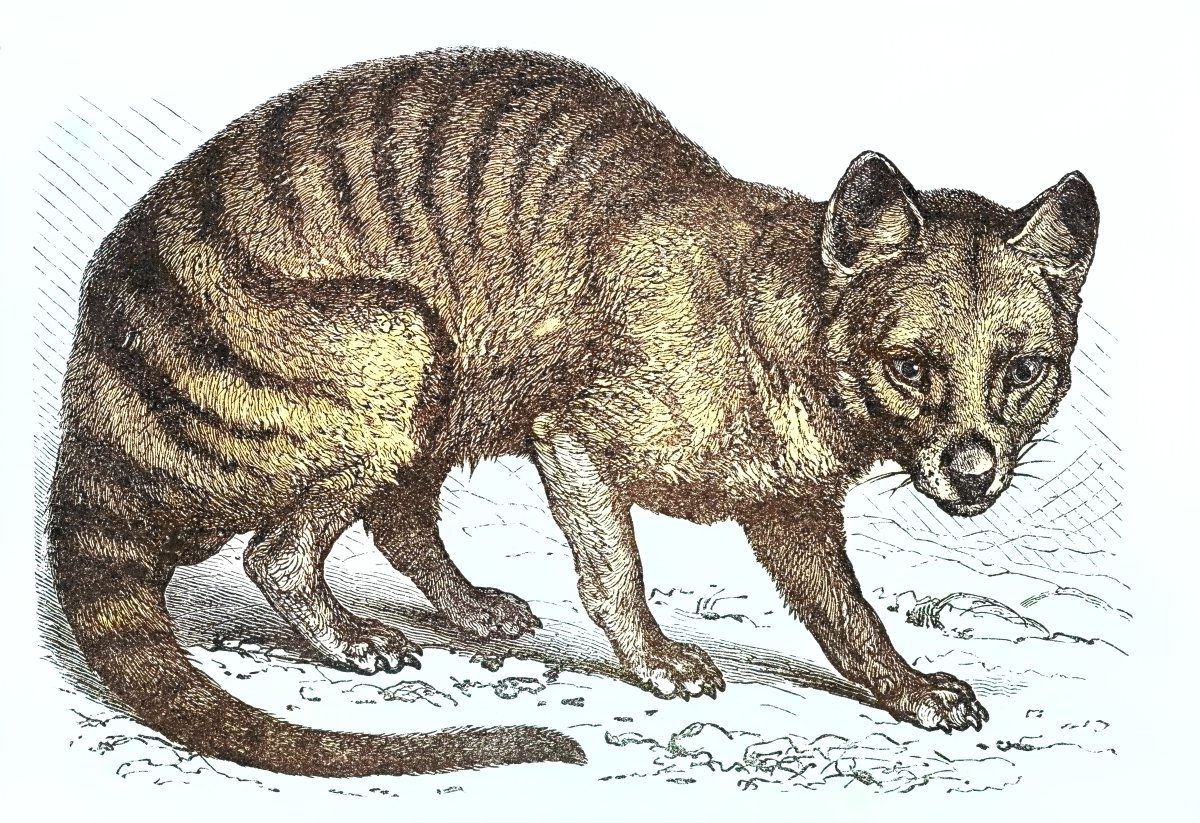The phrase ‘dead and gone’ may no longer be so apropos.

Nearly 90 years after its extinction, scientists are now are attempting to resurrect the Tasmanian tiger (officially known as a thylacine), a carnivorous marsupial formerly native to the Australian bush.
In a pioneering scientific endeavour not so unlike the movie Jurassic Park, the Dallas-based genetics company, Colossal Biosciences, announced Tuesday they are attempting to de-extinct the thylacine to improve biodiversity and the climate.
According to the company’s official website, DNA collected from long-dead thylacines will be used to bring back the animal.
The thylacine faced human-caused extinction, Colossal Biosciences claimed. Once considered a pest by European settlers in Australia, the apex predator often fed on livestock. For this reason, a bounty was placed on the animal in 1830 and it was heavily hunted.
The last wild thylacine was killed between 1910 and 1920, Colossal Biosciences claimed. The last ever thylacine, named Benjamin, died in captivity in 1936 at the Beaumaris Zoo in Hobart, Tasmania. The species was granted protected status in Australia that same year, but it was too late for the former apex predator.
“At the top of its own food chain, the thylacine played a significant role as a protector of environmental health for the regions it habited,” Colossal Biosciences wrote on their website. “Its role as apex meant that it helped remove the weak and the sick as well as kept the balance with competitors helping to ensure species diversity.”
Scientists claim when a predator like the thylacine disappears, a process called “Trophic Downgrading” begins.

Get daily National news
According to Science.org, the extinction of apex predators “may be humankind’s most pervasive influence on nature.” Trophic Downgrading plays a role in the presence of disease, wildfire, carbon sequestration, invasive species, and biogeochemical cycles in the wild.
The scientific process to revive the thylacine is, of course, not an easy one. Researchers will need to use cutting-edge science and technology like gene editing and artificial womb insemination to successfully meet the project’s goals.
Using a 108-year-old specimen preserved at the Victoria Museum in Australia, Colossal Biosciences claims they will “generate high-quality reference genomes for all closest living relatives of the Thylacine to determine best fit for engineering.”
From there, scientists will identify a “recipient host” and utilize genome engineering technologies to insert thylacine genes into the genome of a fat-tailed dunnart.
The fat-tailed dunnart, a mouse-like marsupial, is the closest living relative to the thylacine. According to CNN, the size difference of the two animals (with the thylacine being 51 to 69 centimetres tall, and the fat-tailed dunnart only 60 to 90 millimetres long) is not an issue. This is because “all marsupials give birth to tiny young, sometimes as small as a grain of rice,” CNN reported.
A myriad of other scientific processes with be used to ensure a fully formed embryo is placed successfully in its surrogate, where it will gestate for 42 days, according to Colossal Biosciences.
“Our work is not complete with the birth of the first de-extinct thylacine,” the company wrote. “In partnerships with universities, zoos, governments, wildlife preservations groups and more, we will focus on animal husbandry efforts to raise a healthy population in safe conditions.”
The de-extinction of the thylacine is not Colossal Biosciences only project. The company is also received a US$15-million investment (over $19-million) last year to revive the wooly mammoth.











Comments